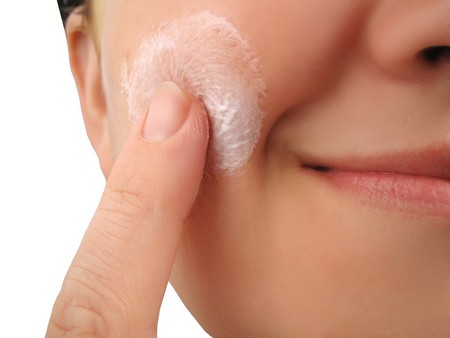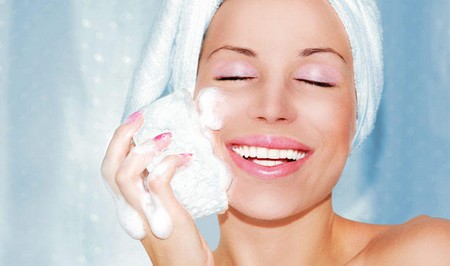Best Way to Select Organic Cosmetics and Skincare Products
Most cosmetics and skincare products contain preservatives to lengthen their shelf-life, but to avoid their potentially harmful effects, here’s how to select products that are more natural.
Just as the long-term effect on our health of the chemicals present in our food has never been quantified, nor has the impact on our wellbeing of the dozens of different cosmetics that a typical woman applies to her skin each day. Without wishing to sound alarmist and send you dumping the contents of your bathroom cabinet straight into the trash can, it’s worth being aware that there are question marks over the safety of certain individual ingredients present in beauty products – let alone the “cocktail” effect.
Questionable ingredients
Some artificial colors – derived from coal tar and used in makeup and skincare products – have been shown to cause cancer not only when ingested, but when applied to the skin. Other ingredients are known irritants, and yet may still be found even in “hypoallergenic” and baby products that we buy because we think they’re safe and gentle. There is also concern over some of the common preservatives.
We’re faced with so many risks in life that many people may consider the health impact of a lipstick to be fairly low down on the lists of things to worry about. But for anyone wishing to cut down their overall exposure to chemicals for ecological reasons, or, for instance, in the case of cancer patients who are now increasingly being given “lifestyle” advice to avoid chemicals, (not to mention anyone who is or plans to become pregnant), “greening” what we put on our bodies, as well as in them, can become a priority. (A recent case that made headline news, for instance, found traces of 350 manmade chemicals – including personal care products – in human breast milk.)
But awareness is all. And so is the reading of ingredients lists, enabling you to make a more informed choice about what products you put in your makeup bag and on your bathroom shelf. Now that cosmetics – certainly, those sold in Europe – have to list ingredients in Latin, even natural ingredients have complex Latin names, adding to the confusion about what is a natural and a chemical substance.
Why add preservatives?
If a cosmetic contains water, it needs preservatives to prevent spoilage. Without preservatives, creams, gels, and lotions become contaminated with bacteria. If a contaminated product seeps into the eyes, there’s a chance that it could trigger a serious infection, as can bacteria entering a cut or scrape on the skin. The safety of cosmetics is more strictly controlled than food, with some cosmetics having a shelf life of up to seven years.
Many of the health anxieties relating to cosmetics concern preservatives. Some of the most allergenic and skin-irritating ingredients release small quantities of formaldehyde – which is not only an irritant, but also a neurotoxin and a carcinogen. A few cosmetic maufacturers avoid these ingredients, but many do not.
The long-term effects
The paraben family of preservatives (which is not formaldehyde-based) has a lower potential for irritancy. As a result, parabens can be found in up to 99 percent of all cosmetics. Parabens are formulated into several compounds and are listed on cosmetic labels as either methyl-, ethyl-, propyl- or butylparaben. Although considered less harmful than formaldehyde-based preservatives, a recent report has questioned the safety of parabens.
To avoid preservatives in cosmetics, the simplest solution is to make your own. If there’s water in a recipe – which may breed bacteria and cause infection – remember to store the product in the refrigerator, and use it up quickly to avoid any risk of bacteria. Alternatively, look out for the more natural preservatives found in store-bought cosmetic products, which include ingredients such as grapefruit seed extract, phenoxyethanol, potassium sorbate, sorbic acid, tocopherol (vitamin E), vitamin A (retinol), vitamin C (ascorbic acid), gum benzoin, and pycnogenol (a potent antioxidant).
Categories
Advertisements
Recent Articles
 How to Understand Bed Sizes – A Small Guide
How to Understand Bed Sizes – A Small Guide How to Select Some Must Have Kitchen Accessories
How to Select Some Must Have Kitchen Accessories Best Way to Change a Car Tire
Best Way to Change a Car Tire Best Way to Write an Affirmation
Best Way to Write an Affirmation Best Way to Take Charge of Your Financial Life
Best Way to Take Charge of Your Financial Life Best Way to Survive a Party When You Don’t Know Anyone
Best Way to Survive a Party When You Don’t Know Anyone Best Way to Stop Self Sabotaging Yourself
Best Way to Stop Self Sabotaging Yourself Best Way to Start Journal Writing
Best Way to Start Journal Writing Best Way to Speak with a Powerful Voice
Best Way to Speak with a Powerful Voice Best Way to Simplify Your Life
Best Way to Simplify Your Life Best Way to Respond to a Put-Down
Best Way to Respond to a Put-Down Best Way to Reduce Acne Breakouts
Best Way to Reduce Acne Breakouts Best Way to Recover from Dining Disasters
Best Way to Recover from Dining Disasters Best Way to Quit Your Job Gracefully
Best Way to Quit Your Job Gracefully Best Way to Make Your Own Website
Best Way to Make Your Own Website



Leave a Reply